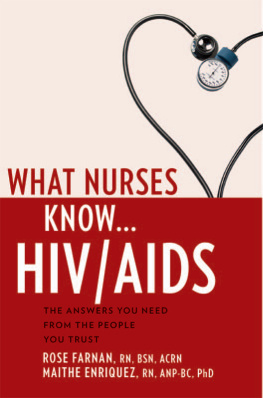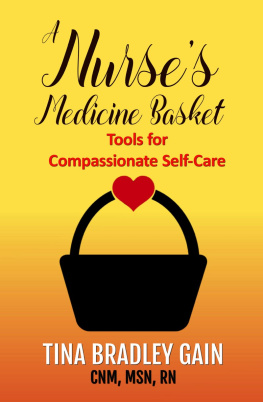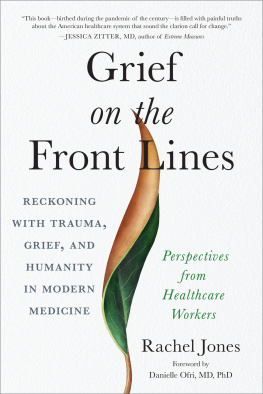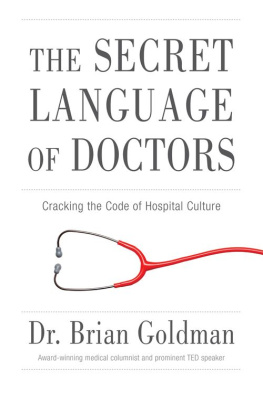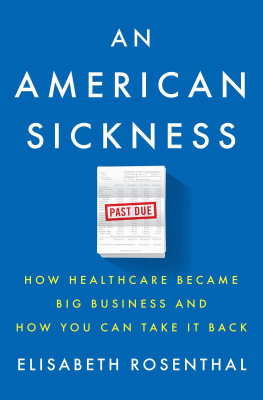INFILTRATING HEALTHCARE
Infiltrating Healthcare
How Marketing Works Underground to Influence Nurses
QUINN GRUNDY

2018 Johns Hopkins University Press
All rights reserved. Published 2018
Printed in the United States of America on acid-free paper
9 8 7 6 5 4 3 2 1
Johns Hopkins University Press
2715 North Charles Street
Baltimore, Maryland 21218-4363
www.press.jhu.edu
Library of Congress Cataloging-in-Publication Data
Names: Grundy, Quinn, 1986 author.
Title: Infiltrating healthcare : how marketing works underground to influence nurses / Quinn Grundy.
Description: Baltimore : Johns Hopkins University Press, 2018. | Includes bibliographical references and index.
Identifiers: LCCN 2018004457 | ISBN 9781421426754 (hardcover : alk. paper) | ISBN 9781421426761 (electronic) | ISBN 1421426757 (hardcover : alk. paper) | ISBN 1421426765 (electronic)
Subjects: | MESH: Nursing | Marketing of Health Services | Nurses Role | Practice Patterns, Nurses | Drug Industryeconomics | Conflict of Interest
Classification: LCC RT86.7 | NLM WY 16.1 | DDC 610.7306/9dc23
LC record available at https://lccn.loc.gov/2018004457
A catalog record for this book is available from the British Library.
Special discounts are available for bulk purchases of this book. For more information, please contact Special Sales at 410-516-6936 or .
Johns Hopkins University Press uses environmentally friendly book materials, including recycled text paper that is composed of at least 30 percent post-consumer waste, whenever possible.
CONTENTS
ACKNOWLEDGMENTS
I would first like to thank the research participants who generously gave their time and stories to this project. I also gratefully acknowledge those individuals who took an interest in the project and assisted me in gaining access to their institutions and promoting the project within.
This research was funded by a Graduate Deans Health Science Fellowship from the University of California, San Francisco, a Doctoral Research Award from the Canadian Institutes of Health Research (CIHR), and grant number R36HS022383 from the Agency for Healthcare Research and Quality. While writing this book, I was supported by a Postdoctoral Fellowship from the CIHR.
I undertook this project with the unparalleled mentorship of Ruth Malone and Lisa Bero. I have benefited immensely from their intellectual and personal generosity and cannot thank them enough for the opportunities they have afforded me.
I am thankful to Shannon Smith-Bernardin and Tae-Wol Stanley and all of my colleagues at the San Francisco Medical Respite and Sobering Center. Shannon and Tae-Wol gave me the opportunity to become a nurse; I gratefully acknowledge the incredible support and flexibility that they allowed me while I conducted this research.
I have enjoyed the support of colleagues, now friends, who have created such stimulating and collaborative working environments throughout this project. I would like to thank Leslie Dubbin, Susan Forsyth, Kate Horton, and Sonia Rab Alam, for their critical contributions to this analysis and their coffee shop and library companionship; Nicholas Chartres, Alice Fabbri, Barbara Mintzes, Darryl Stelmach, and Jeff Wang, for their support through the writing phase; and Alan Cassels, Ellen Goldstein, Annemarie Jutel, Joel Lexchin, Wendy Lipworth, Ray Moynihan, and Marion Nestle, who so generously gave their time to shepherd me through the book-writing process.
I am indebted to my early and thorough readers for their astute insights and careful editing and wish to thank, in particular, Todd Carnam, Mollie James, and Kathy Williams. Thanks to Robin W. Coleman, Barbara Lamb, Laura Williamson, and Katherine Van Zyderveld for their editing services.
My life is blessed by the stalwart friendship of some exceptional people who saw me through the years of this project and have made this time such fun. I wish to thank Virginia and David Blackman, Scott Brunsdon and Lisa Hoelzl, Todd Carnam, Kristopher Geda and Andy Jih, Emily Green, Fabian Held and Adam McGowan, Lea Hermann, Kate Horton, Emilia Patrick, Louise Pocock, Mark and Helena Read, and JP Whan.
I thank my family for their love, support, and encouragement: my parents, Lorie and Paul Grundy; my parents-in-law, Kathy and Lorris Williams; and my sisters, Hayley Grundy, Mollie James, and Grace Grundy. Your FaceTimes, visits, and mountain oases provided much-needed respite and motivation.
Finally, I would like to thank Walter, who arrived right on time, and my husband, Lorris Williams, who quite literally fueled this adventure, and whom I thank for everything.
INFILTRATING HEALTHCARE
Prologue
There is a hush over the hospital at 7 in the morning. Bleary-eyed, anxious family members wave to their fathers, sisters, wives, sons as they are pushed through the double doors marked restricted access on their way to surgery. Then they go off to find a coffee or a corner of the waiting room, and proceed to wait. A quiet hum begins to grow; in the locker rooms, the night shift staff peel off their hats, booties, and pale green scrubs, transforming back into regular people, while the day shift performs the opposite transformation. And among this tidal change of greens, there are flashes of bright red scrubs: the medical device sales representatives who pass through the double doors, towing suitcases on wheels, stopping to check in at the nursing station.
In an operating room, a scrub nurse begins setting up her sterile field for a spine surgery. The circulating nurse bustles around, fetching packages of dressings and implements, collecting documents, setting up the electronic chart. Talking among themselves, the nurses chat over the tables as the scrub nurse sets out the tools and supplies they will need in the course of the surgery. Bantering, with notes of irony and humor in their voices, the scrub nurse observes, This surgeon doesnt like me, while the other offers, Well, were not the A-team he prefers, both anticipating conflict of some sort during the case. In walks a tall, blond, good-looking man in bright red scrubs, who greets the nurses warmly. He is the sales representative for the device company that manufactures the screws that will be implanted in the patients spine during todays surgery.
Andrew, the sales representative, had left his house at 5:30 that morning, hopped in his mobile office (the company car), and commuted to the hospital, one of the biggest clients in his territory. He is there several days a week supporting cases and knows his way around. He has two small children, but puts in 60-plus hours a week, as he works on 100% commission in this sink or swim field, as he describes it. He steps out briefly to grab a coffee while the nurse goes to scrub ina thorough hand and arm washingand by the time he returns, the scrub nurse is in need of assistance to tie her sterile gown, so he readily sets down the coffee by the charting station to assist. The patient is wheeled into the room by the anesthesia team. The surgical fellow arrives after scrubbing in, greets Andrew warmly, and then hovers over the patient to begin readying for the case. Andrew is not meant to touch anything, so he is exempt from the hand-washing procedure.
Andrew and the scrub nurse stand over the tables covered in supplies and big metal boxes. These are sterile trays filled with tools that look like hammers, screw drivers, clamps, and ratchets, on loan from Andrews company and included in the price of the screw implants. Andrews role is to support the scrub nurse; for each case, only about 25% of all the tools they have ready will be used, and these are tailored to the individual surgeon and the case. Although the nurses are orthopedic specialists and have probably worked with these sets of instruments before, spine implants are a highly competitive field. This scrub nurse has likely worked with 10 different surgical sets from various companies, with various surgeons, since she last used these particular tools. Andrews role is to help the nurse navigate the boxes and have the appropriate tool ready at the appropriate time, helping the nurse set up the equipment and offering suggestions minute to minute during the case. Andrew has a bachelor of science degree in marketing and spent an intensive two weeks at his companys headquarters studying anatomy, the equipment, and sales strategies, followed by six months of field training with an experienced sales representative. Occasionally, Andrew perceives that nurses resent this help, as he has no clinical training, but ignoring his suggestions could mean slowing down the surgery and angering the surgeon.
Next page

